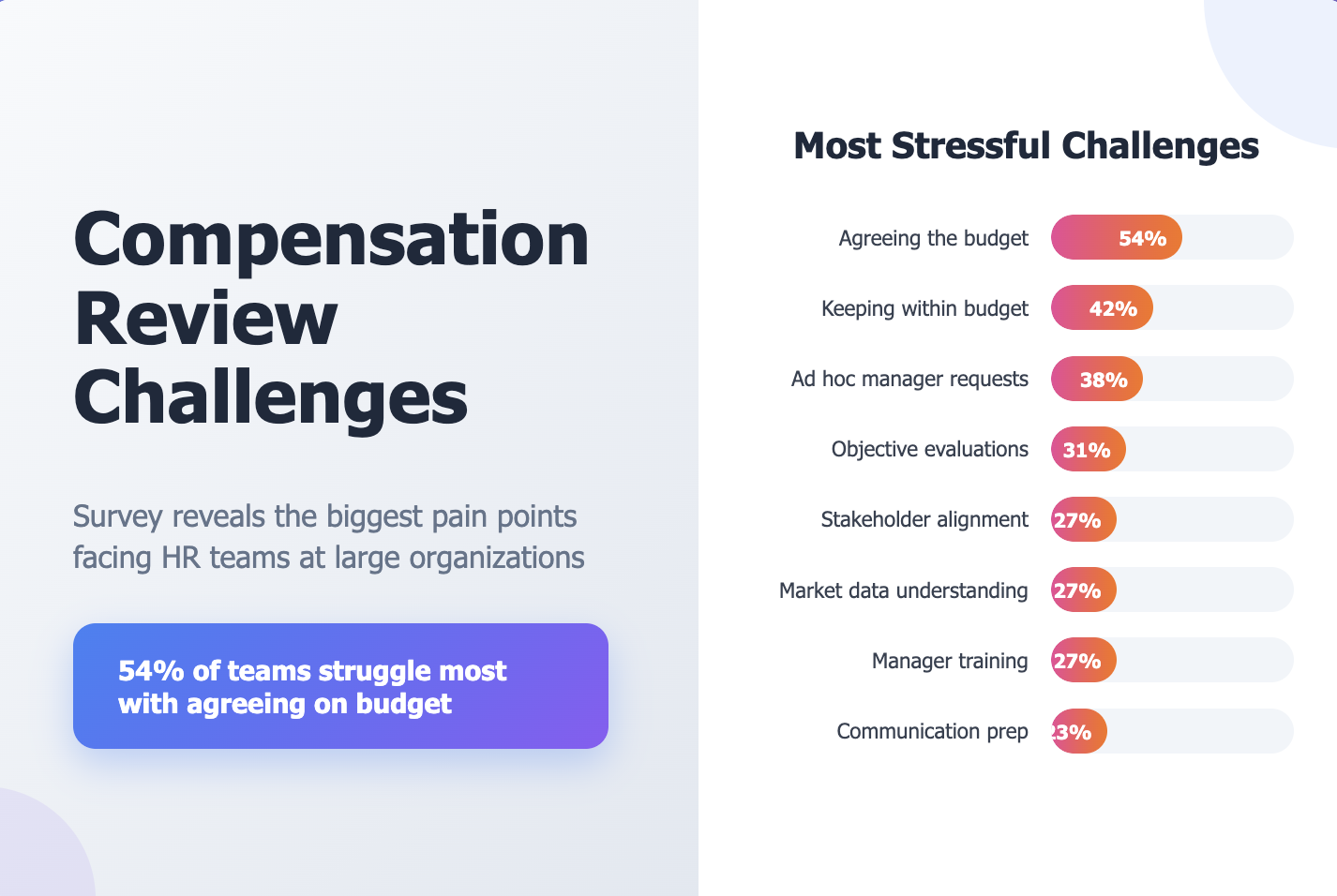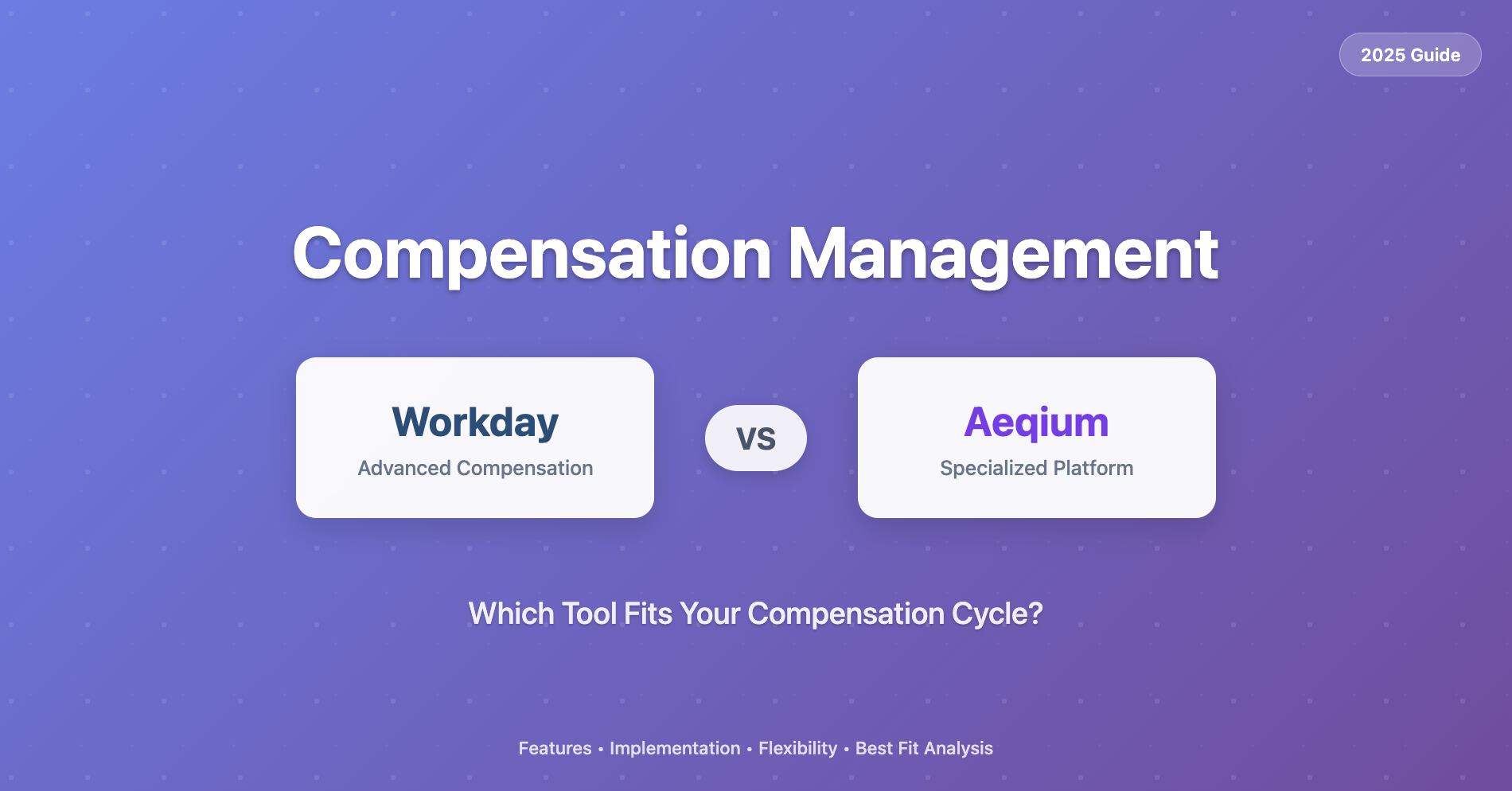Maximizing Compensation Planning Momentum: Steps to Take After a Successful Cycle

It’s February, which means that for most companies the end-of-year compensation cycle has come to a close. Compensation leaders and the managers responsible for reviewing employees know just how time-consuming and frustrating this process can be.
Now that most compensation and HR teams are coming back from a well-deserved break, it’s time to take some of the crucial steps that allow you to continuously improve how you run better, more efficient compensation planning.
Here are a few steps to make sure your next cycle goes as smoothly as possible.
Run a Retrospective
Compensation cycles are complex, cross-functional, business-critical efforts. For any sort of significant undertaking like this, one of the best ways to learn and improve is to run a post-mortem (or retro) to understand what went well and what could have gone better.
During a retro, your team gathers feedback from a variety of perspectives in order to streamline and improve your compensation cycles moving forward. The goal is to settle on actionable steps to take in the short run, take a step back, and consider whether you have the right tools and strategy for the long run.
When you conduct a retro, you should include members of your compensation team as well as stakeholders from other departments who actually participated in the cycle. It’s typical to either run this retrospective as an efficient meeting or asynchronously via a survey or similar feedback-gathering method (potentially with additional follow-up discussions).
Look to gain learnings about what to start, stop, or continue about how you’re running compensation cycles. For example:
- Were decisions made to a high degree of quality?
- Do you need to amend your compensation bands or even your entire compensation philosophy?
- Did you have the right people involved at each stage of the compensation cycle?
- Were there any major errors or missteps during the compensation cycle or subsequent communication?
- Do teams perceive that the compensation cycle was efficient or overly time-consuming?
This sort of retrospective is invaluable as a way to get a baseline for where your current compensation cycles are going well and where you need to improve. And even if your process is already great (and your whole team agrees), a retro can be an efficient way to get confirmation that you’re on the right track and don’t need to significantly upgrade your systems.
Communicate Major Comp Cycle Changes
Employees are rightfully very sensitive to changes in how they’re compensated, and it’s essential to communicate significant changes to your compensation system delicately.
As a result, it’s best to institute any major changes to how you run compensation cycles as far in advance before the next cycle as possible. One of the worst experiences you can have as an employee at a company is feeling like you’ve had the rug pulled out from under you. Communicating planned changes far in advance provides ample opportunity to explain the reasoning behind changes and even to change course if necessary.
Any major changes that run the risk of disappointing or confusing employees (or managers) could warrant communication well in advance of the next cycle. For example:
- Will you make changes to your bonus structure or equity incentive plan?
- Will you run future compensation cycles significantly differently – for example, are you planning to have different sets of decision-makers or approvers or switch from a system with a fixed budget per department to one where individual managers have more discretion?
- Will you be instituting changes to the recommended amounts you’ll pay employees? For example, are you planning to change your compensation bands, pay equity rules, or cost-of-living adjustments?
Whatever the change, consider whether you should kick off communication now to ensure that your team is fully enabled and bought in on changes well before they move into place.
Align With Other Departments
Compensation management is tightly integrated into many other parts of company planning. From obvious partner functions such as finance or recruiting to other facets of the business such as sales forecasting or even legal (many countries have different sets of employment laws!), it’s vital to make sure that other departments are aligned with any upgrades you might make in your compensation planning process.
Some important areas to consider when mapping out compensation cycle changes include:
- How will your next compensation cycle align with your budget planning cycle?
- Will you need to calculate or align budgets differently? Many organizations occasionally shift budget ownership during organizational redesigns, and it can be important to know where and how budgets will be allocated for your next cycle
- Are there any adjustments that your recruiting team will need to make based on your compensation decisions? Are there any adjustments that you’ll need to make to future compensation cycles based on recruiting needs?
Most departments are filled with busy people. If you get on their agenda early, you can usually get them to act as great partners and help your next compensation cycle run smoothly.
Re-evaluate Your Tools
The best time to re-evaluate your compensation cycle management toolkit is right before or after a compensation cycle so that you can take your team’s fresh learnings and apply them to a new and hopefully better system.
Migrating systems always takes time – whether you’re migrating from one compensation platform to another or from a series of spreadsheets to a dedicated product. You’ll typically need to budget time for several sequential steps to switch out your compensation management platform, including:
- Vendor evaluations, including pricing negotiations and kickoff
- System setup and data uploads
- Side-by-side validation and testing
- Enablement and training
If you’re planning to change your compensation management platform, the best time to kick off an evaluation – or to start migrating if you’ve already decided on a new vendor – is right after your last cycle has been completed. Even in the event that you’re just re-evaluating or evolving spreadsheets that you’ve used to run compensation cycles in the past, the weeks following a completed comp cycle are the best time to kick off a new vendor evaluation.
Making a change
If you’ve decided your compensation cycles could use improvement following your retro, request a demo of Aeqium. Our product experts will configure your complete compensation process at no charge to test with your HR team and managers.
See why the people teams at Warby Parker, Braze, Hopper, and more swear by Aeqium to run fast, accurate compensation cycles without risk, lost time, or frustration.




